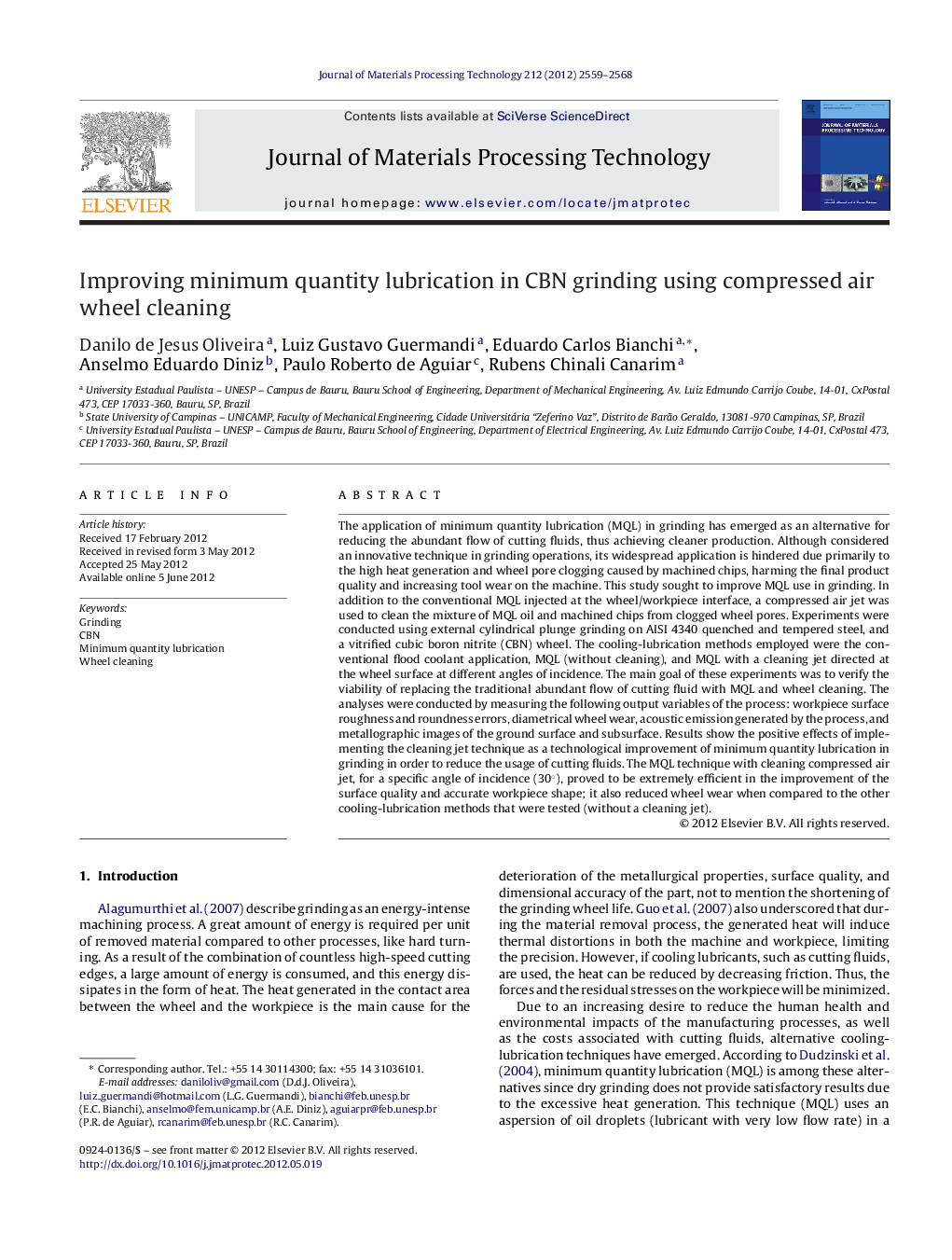| Article ID | Journal | Published Year | Pages | File Type |
|---|---|---|---|---|
| 10417493 | Journal of Materials Processing Technology | 2012 | 10 Pages |
Abstract
The application of minimum quantity lubrication (MQL) in grinding has emerged as an alternative for reducing the abundant flow of cutting fluids, thus achieving cleaner production. Although considered an innovative technique in grinding operations, its widespread application is hindered due primarily to the high heat generation and wheel pore clogging caused by machined chips, harming the final product quality and increasing tool wear on the machine. This study sought to improve MQL use in grinding. In addition to the conventional MQL injected at the wheel/workpiece interface, a compressed air jet was used to clean the mixture of MQL oil and machined chips from clogged wheel pores. Experiments were conducted using external cylindrical plunge grinding on AISI 4340 quenched and tempered steel, and a vitrified cubic boron nitrite (CBN) wheel. The cooling-lubrication methods employed were the conventional flood coolant application, MQL (without cleaning), and MQL with a cleaning jet directed at the wheel surface at different angles of incidence. The main goal of these experiments was to verify the viability of replacing the traditional abundant flow of cutting fluid with MQL and wheel cleaning. The analyses were conducted by measuring the following output variables of the process: workpiece surface roughness and roundness errors, diametrical wheel wear, acoustic emission generated by the process, and metallographic images of the ground surface and subsurface. Results show the positive effects of implementing the cleaning jet technique as a technological improvement of minimum quantity lubrication in grinding in order to reduce the usage of cutting fluids. The MQL technique with cleaning compressed air jet, for a specific angle of incidence (30°), proved to be extremely efficient in the improvement of the surface quality and accurate workpiece shape; it also reduced wheel wear when compared to the other cooling-lubrication methods that were tested (without a cleaning jet).
Related Topics
Physical Sciences and Engineering
Engineering
Industrial and Manufacturing Engineering
Authors
Danilo de Jesus Oliveira, Luiz Gustavo Guermandi, Eduardo Carlos Bianchi, Anselmo Eduardo Diniz, Paulo Roberto de Aguiar, Rubens Chinali Canarim,
